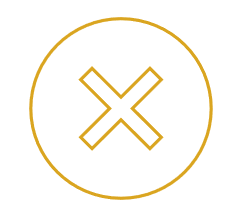Case Study: Ultraviolet Curing & Power
- Project Name: Ultraviolet Curing 5S Application
- Industry: Printing
- Achievement: Improvement of process to meet sales goals
The Challenge
Ultraviolet curing is a photochemical process that uses high-intensity ultraviolet light to dry inks during the printing process. A Belgian-based company whose roots in printing stretched back three centuries, had discovered that its output was not matching up to sales forecasts. To stay competitive, especially from offshore/international competitors, and with digital media taking a large bite out of the industry as a whole, the company had been forced to extend sales forecasts and projected revenues to a point that dipped far below break-even.
Management struggled with the idea of hiring more printing staff, in the hopes that the costs of these extra people would be surpassed by their output.
Additionally, the company had experienced a significant increase in defects in print output quality, affecting a staggering 95% of all output. Most of these were discovered internally and corrected but at great cost in terms of time and personnel.
The Lean Solution
The company approached Zerwaste, who immediately conducted a review of the start-to-finish process, using an external printing industry consultant as an objective resource. From this we created a set of standardized work instructions that removed some of the variability and established metrics that could be used to track a project as well as to create realistic estimates and pricing for customers.
Employees who had been long used to working independently were asked to start to join work teams. Knowing how difficult a transition this would be, we incorporated personality assessments to create teams of complementary skill and temperament sets, and we also delivered change management coaching to each employee.
Assessment of work in progress resulted in application of a 5S procedure. As an offshoot of lean Six Sigma, 5S uses Japanese words that outline a workplace organization process. English words, also starting with the letter “S” have since been added. They are:
- Seiri (Sort)
- Seiton (Straighten, Set)
- Seiso (Shine, Sweep)
- Seiketsu (Standardize)
- Shitsuke (Sustain)
The 5S process allowed us, alongside the employees, to identify where tasks and procedures had grown organically and had become wasteful, either in time, materials, or quality.
Some of the solutions were deceptively easy.
- Purchasing a second collection of tools removed the wait and the effort of walking back and forth to other workstations to “borrow” the single tool.
- A small winch-crane was purchased and installed to assist in the lifting of heavy parts. This cut down significantly on delays and even injury.
- We delivered a birds-eye-view of the printing plant, to allow each employee to envision the process as a left-to-right, one-time-across-the-floor process, in which raw material entered from a door on the left and a perfect finished product departed from a door on the right.
This mindset challenge was highly effective in convincing the workforce of the value of change.
Results
Output and quality increased substantially and immediately. Production went from 1.5 product units per day to one every 15 minutes (32 units per day), with 99% accuracy – a significant Six Sigma victory. No additional production staff needed to be hired.



